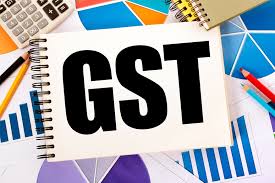GST collection may hit a record in November
Goods and Services Tax (GST) collection of central and state governments looks set to scale a record high in November, e-way bills for October indicate.
E-way bills or electronic permits generated for goods transportation have risen to an all-time high of 73.5 million in October, showed data from GSTN, the company that processes tax returns.
This is higher than the 71.2 million permits raised in March, which had led to the highest GST collection so far of ₹1.41 trillion in April.
Taxes for transactions in a month are collected in the subsequent month.
The surge in goods transportation permits confirms the view that festive demand is giving a strong push to economic recovery.
It is also in line with policymakers’ optimism that festive demand, sustained vaccination and robust farm sector growth are fuelling industrial recovery.
GST receipts in October for transactions in September have already reached the second highest level of ₹1.3 trillion since the roll-out of the new indirect tax regime in 2017, aided by the pick-up in economic activity.
Google mobility trends for places such as supermarkets, food warehouses, farmers markets, specialty food shops and pharmacies for 29 October shows a 51% improvement over the baseline calculated using data from a five-week period starting 3 January 2020.
GST receipts in October have already encouraged experts to predict that the central government may exceed its FY22 budget estimate of collecting ₹5.3 trillion central GST (CGST) by up to ₹50,000 crore.
Improvements in GST collections and compliance are also expected to rub off on corporate tax collections.
October is the peak of festive season where purchases traditionally go up. The highest ever e-way bill issuance in October suggests that tax receipts in November could see a clear jump over that of October," said Abhishek Jain, tax partner at EY.
“Improved tax compliance, economic recovery, pent-up demand after the second wave of the pandemic and policy measures to support economic growth have aided in this," Jain added.
The improvement in tax collections so far with the ebbing away of the second wave of the pandemic and the promise of further gains are set to ease the pressure on central and state governments.
Large states including Gujarat, Tamil Nadu, Uttar Pradesh, Delhi, Maharashtra and Punjab are major beneficiaries of GST compensation transfers from the central government and are facing a fiscal cliff once the compensation payments come to an end in June 2022.
For them, improving revenue collection trend will make it less onerous to meet their resource requirements.
Already two ministerial panels are looking into ways of reworking GST structure and its administration to improve revenue collections.
Download our App to get knowledge updates: https://play.google.com/store/apps/details?id=com.app.gstmitra



Comments
Post a Comment